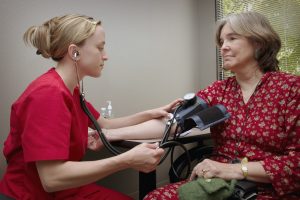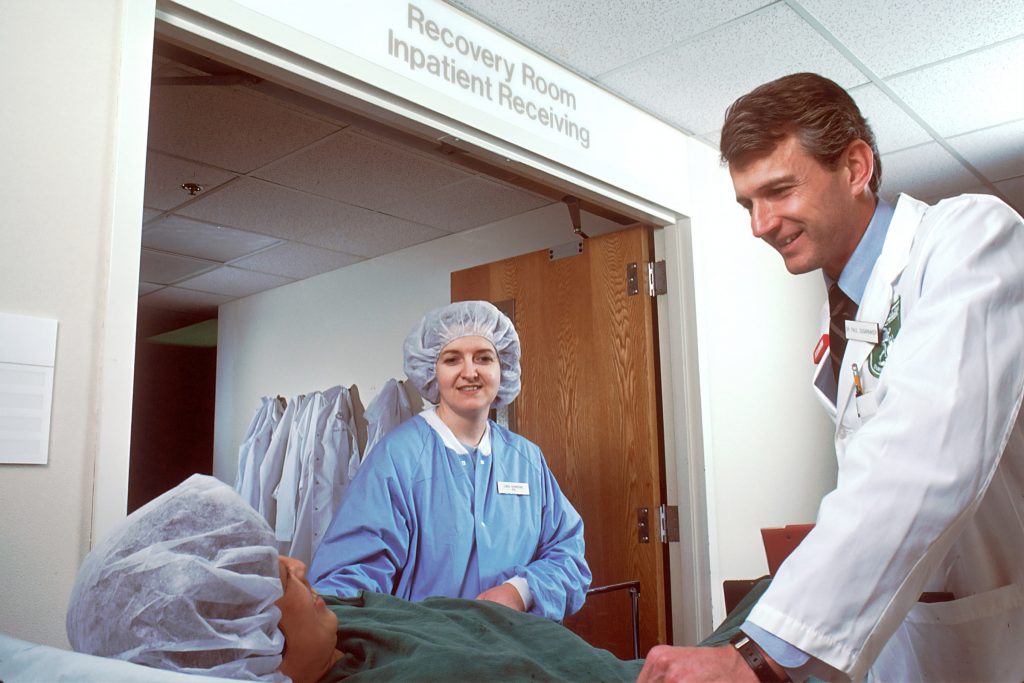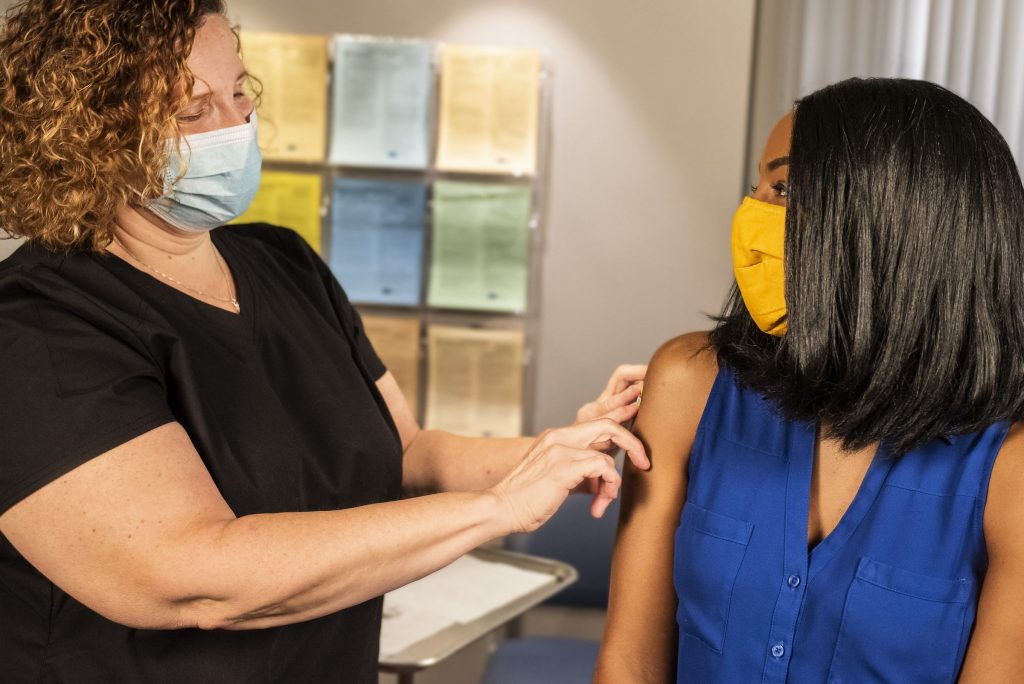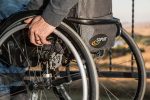
Patient care technicians are the ones who do the majority of the recurring medical tasks inside a hospital or doctor’s office.
Per the Bureau of Labor Statistics (BLS), they are categorized as nursing assistants and orderlies.
A certified nursing assistant (CNA) administers patient care for basic tasks of living like bathing, feeding, and medicating.
An orderly does not do any direct medical treatment, but they help with patient mobility.
Both may have duties like sanitizing a patient’s room.
Whether you’re on your way to graduating high school or debating a career change, these pros and cons of becoming a patient care technician will help you decide if you can handle the responsibilities of the job.
Page Navigation
Pros of Being a Patient Care Technician

All mentions of employment metrics like wages and the number of jobs are taken from the 2020 information published by the BLS.
Minimal Training Requirements
If you already have your high school diploma or GED, you can become a CNA in as little as four weeks with an expected maximum of 12 weeks.
For orderlies, this extra training is not necessary, but you are likely to have on-the-job training that covers specifics like how to move patients safely and respectably.
Most other medical technicians and nursing positions require at least an Associate’s degree in that specific field.
If you look into a CNA job after high school graduation, you might have a job before the end of the following summer.
Increased Pay
While the median wage for fast food and related workers in the U.S. was $11.60 in 2020, the median pay for assistants and orderlies was $14.82 per hour.
That’s a nearly 25% jump in pay for a small amount of training and a work environment that is potentially less stressful than one where a manager is breathing down the necks of the only two employees who showed up that day to get all the orders out within 30 seconds.
Intrinsic Benefits of Caretaking
CNAs, orderlies, and all medical staff are critical in improving the quality of life of patients, and we all are patients at one point or another.
If you spend any amount of time working in one of these positions, you will have a notable and positive impact on somebody’s life.
It may not always be obvious to you, especially given how the vital duties of CNAs and orderlies can be dismissed as simple.
Every time a CNA sanitizes a room, it can mean one less person dying of an infection.
If you want to embark on a medical career for the chance to help people, becoming a CNA or orderly is one of the fastest ways to accomplish your dream.
Improved Acceptance Chance at Nursing Programs
Nursing programs are in short supply and can be vehemently competitive for potential candidates.
If you have been working in a nursing-related field like patient care for some time, the nursing school will factor your experience into your application, giving you a leg up over the others.
Many nurses have used a CNA position as the first step on their way to becoming fully registered nurses.
Reliable Job Prospects
The expected growth of patient care technician jobs is expected to be 8% from 2020-2030, which is on par with the average growth rate across all occupations.
That percentage translates to over 100,000 new CNA and orderly positions expected over the next decade.
With current CNAs and orderlies moving to new positions, the BLS estimates that there will be close to 200,000 openings every year.
The complicated and delicate nature of patient care technicians’ job duties makes them difficult to automate, so they will have to dramatically advance the capability of service robots before AI begins cutting jobs away from CNAs and orderlies.
A Large Network of Other Technicians
Nurses and orderlies account for 1,440,700 jobs in 2020.
If you need to discuss an issue with your work environment or get advice, there is a near-endless number of potential sources of support at the peer level.
Note that this does not mean that all medical offices keep an adequate number of patient care technicians on staff, whether on purpose or due to lack of applicants.
Geographically Unlocked
As the employment numbers suggest, everybody from the biggest metropolis to the smallest county hospital needs orderlies and nursing assistants.
If you have a final homestead location in mind, a CNA can set you up for a decent-paying job anywhere in the country.
You can gain some experience and working cash in your local area before beginning to survey your options for escaping to a new area.
The freedom to pick up and choose a new employer, almost anywhere at almost anytime, is a value that cannot be understated.
Cons of Being a Patient Care Technician

Direct Patient Interaction
Whether you become a CNA or an orderly, patients will be interacting with you.
Usually, this is uneventful socialization as you assist the patient with their care.
On some occasions, patients can deliberately be antagonistic or even violent.
Your available actions when a patient becomes uncooperative may be limited, forcing you to endure uncomfortable situations if the patient is not crossing a firm line.
Physical Activity
Whether cleaning rooms, helping patients, or performing other tasks, you will likely be on your feet and moving for the entirety of a shift.
If you’re not capable of maintaining physical activity for prolonged periods, a career as a patient care technician will be rough on your body.
As long as you have no underlying health issues causing problems with physical activity, this is a con that can be overcome with enough time and dedication.
Gross Elements
CNAs and orderlies are frequently tasked with cleaning up after patients, and patients may have issues that arise during treatment or movement.
You will undoubtedly have to deal with blood, feces, vomit, mucus, and other unpleasant bodily emissions in these careers.
The medical office will provide the necessary equipment to deal with the mess, but it will still have the potential to trigger an unpleasant reflex if you are squeamish.
No Remote Work
If you’ve been doing a job that moved to a work-from-home style during a pandemic, like answering phone calls or an online job, then you won’t have the option to stay remote if you want to be physically caring for patients.
Long Hours
Some CNA and orderly positions have more typical 8-hour shifts, but many are on the extended 12-hour shifts common in medical facilities.
Managers can be persistent about asking for extra shifts, as well.
It can be easy to get lost in a cycle of working, running errands as fast as possible, sleeping, and repeating.
This can sometimes translate into more “days off” when you work multiple long shifts in a few days, but switching back and forth between long hours of work and several days off can be just as difficult.
Additional Training Is Required to Advance
Your time and experience as a CNA or orderly may be factored into your applications to schools and hospitals, but they will not fully replace a degree from an accredited school and a proper license for any advanced positions.
The experience that you gain and the money that you make will help you get those future degrees if you’re interested.
Should I Become a Patient Care Technician?

The two most limiting factors for anyone looking at a career as a patient care technician should be their tolerance for the gross and uncomfortable plus their ability to perform physical tasks for long periods.
Patients can be intentionally and unintentionally difficult.
All humans can create foul smells and substances that become your responsibility as a CNA or an orderly.
You will be spending many hours moving about the hospital from patient to patient, helping them with their medical care during their time there.
For those who can tolerate the potential of dealing with hazardous body fluids, difficult patients, and strenuous activity, then becoming a patient care technician is a fantastic step away from other post-GED career paths.
It has a respectable pay level, is an intrinsically rewarding job, and can lead to further career opportunities.
Pros and Cons of Being a Patient Care Technician Summary Table
| Pros of Being a Patient Care Technician | Cons of Being a Patient Care Technician |
|---|---|
| Minimal Training Requirements | Direct Patient Interaction |
| Increased Pay | Physical Activity |
| Intrinsic Benefits of Caretaking | Gross Elements |
| Improved Acceptance Chance at Nursing Programs | No Remote Work |
| Reliable Job Prospects | Long Hours |
| A Large Network of Other Technicians | Additional Training Is Required to Advance |
| Geographically Unlocked |








